MaryAnn Bernal's Blog, page 193
March 2, 2015
History Trivia - Ethelred of Wessex defeats the Danish invasion army
March 2
 462 Total Lunar Eclipse.
462 Total Lunar Eclipse.
 672 Saint Caedda died. He was educated at Lindisfarne and spent time in Ireland before succeeding his brother as Abbot of Laestingaeu in Yorkshire.
672 Saint Caedda died. He was educated at Lindisfarne and spent time in Ireland before succeeding his brother as Abbot of Laestingaeu in Yorkshire.
 871 Battle at Marton: Ethelred of Wessex beat the Danish invasion army.
871 Battle at Marton: Ethelred of Wessex beat the Danish invasion army.
 462 Total Lunar Eclipse.
462 Total Lunar Eclipse.  672 Saint Caedda died. He was educated at Lindisfarne and spent time in Ireland before succeeding his brother as Abbot of Laestingaeu in Yorkshire.
672 Saint Caedda died. He was educated at Lindisfarne and spent time in Ireland before succeeding his brother as Abbot of Laestingaeu in Yorkshire.  871 Battle at Marton: Ethelred of Wessex beat the Danish invasion army.
871 Battle at Marton: Ethelred of Wessex beat the Danish invasion army.
Published on March 02, 2015 03:00
March 1, 2015
History Trivia - Romulus, first king of Rome, celebrates his victory over the Caeninenses
March 1

752 BC Romulus, first king of Rome, celebrated the first Roman triumph after his victory over the Caeninenses, following the Rape of the Sabine Women.
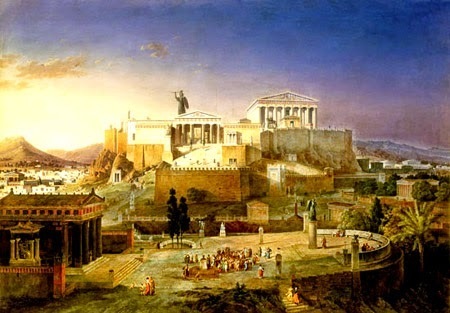
86 BC Lucius Cornelius Sulla, at the head of a Roman Republic army, entered Athens, and removed the tyrant Aristion who was supported by troops of Mithridates VI of Pontus.
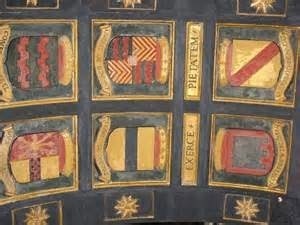
918 Balderik became Bishop of Utrecht. He was the son of Count Ricfried in the Betuwe, who expelled the Vikings from Utrecht.

752 BC Romulus, first king of Rome, celebrated the first Roman triumph after his victory over the Caeninenses, following the Rape of the Sabine Women.

86 BC Lucius Cornelius Sulla, at the head of a Roman Republic army, entered Athens, and removed the tyrant Aristion who was supported by troops of Mithridates VI of Pontus.

918 Balderik became Bishop of Utrecht. He was the son of Count Ricfried in the Betuwe, who expelled the Vikings from Utrecht.
Published on March 01, 2015 03:00
February 28, 2015
R.I.P. Mr. Spock - A short tribute to the great Leonard Nimoy
Published on February 28, 2015 04:49
History Trivia - Westminster Abbey opens
February 28

1066 Westminster Abbey opened.
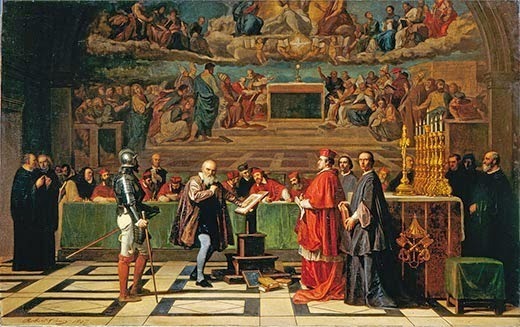
1574 Two Englishmen and an Irishman were burnt for heresy on the orders of the Holy Office of the Inquisition.
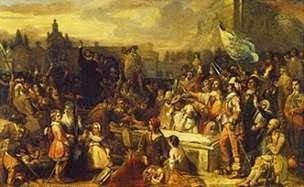
1638 The Scottish National Covenant was signed in Edinburgh, which denounced the attempts by Charles I to force the Scottish church to conform to English practices, at the same time urging loyalty to the king.

1066 Westminster Abbey opened.

1574 Two Englishmen and an Irishman were burnt for heresy on the orders of the Holy Office of the Inquisition.

1638 The Scottish National Covenant was signed in Edinburgh, which denounced the attempts by Charles I to force the Scottish church to conform to English practices, at the same time urging loyalty to the king.
Published on February 28, 2015 02:00
February 27, 2015
History Trivia - 15th recorded perihelion passage of Halley's Comet
February 27

380 Roman emperor Theodosius declared the orthodoxy of the Nicene Creed, and made Christianity the sole religion of the empire.

837 The 15th recorded perihelion passage of Halley's Comet.
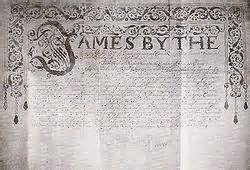
1560 The Treaty of Berwick, which expelled the French from Scotland, was signed by England and the Congregation of Scotland.

380 Roman emperor Theodosius declared the orthodoxy of the Nicene Creed, and made Christianity the sole religion of the empire.

837 The 15th recorded perihelion passage of Halley's Comet.

1560 The Treaty of Berwick, which expelled the French from Scotland, was signed by England and the Congregation of Scotland.
Published on February 27, 2015 02:00
February 26, 2015
'Unique' Roman tombstone found in Cirencester
BBC News
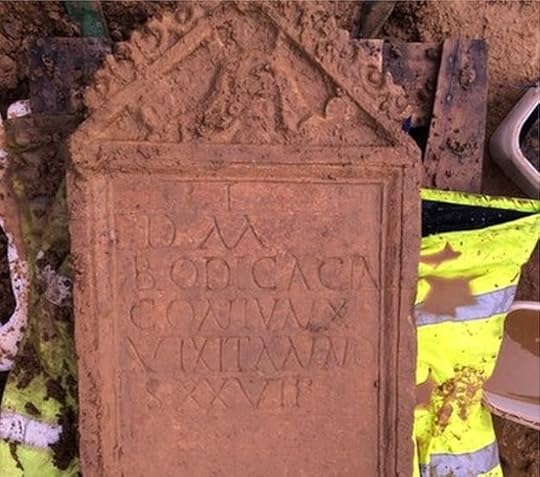 Archaeologists say the quality of the sculpture is very good A "unique" Roman headstone is the first of its kind unearthed in the UK, experts believe.The tombstone was found near skeletal remains thought to belong to the person named on its inscription, making the discovery unique.
Archaeologists say the quality of the sculpture is very good A "unique" Roman headstone is the first of its kind unearthed in the UK, experts believe.The tombstone was found near skeletal remains thought to belong to the person named on its inscription, making the discovery unique.
Archaeologists behind the dig in Cirencester, Gloucestershire, said they believed it marked the grave of a 27-year-old woman called Bodica.
The bodies of three children were also found in the "family burial plot".
Neil Holbrook, of Cotswold Archaeology, translated the Roman inscription on the tombstone, which reads: "To the spirit of the departed Bodica [or Bodicaca], wife, lived for 27 years."
Mr Holbrook said: "The unique aspect is that you can put a name to the person who lies beneath the tombstone."
A rare Roman tombstone marking the grave of a 27-year-old woman has been unearthed in Cirencester"What's weird is that the inscription only fills half of the panel, so there's a space left below it.
"You can see horizontal marking-out lines, so I guess what they were going to do was come back later when her husband died and add his name to the inscription," Mr Holbrook added.
He added that the skeletal remains, including the skull, were being excavated from beneath the headstone.
'Decorative swirls' Mr Holbrook has suggested the name Bodica was of Celtic origin.
Watch the moment archaeologists lifted a Roman tombstone in Cirencester"Perhaps Bodica is a local Gloucestershire girl who's married an incoming Roman or Gaul from France and has adopted this very Roman way of death," he said.
He said making the "good quality" headstone must have cost "quite a lot of money" at the time.
The headstone's detailed carved pediment - or triangular top section - was particularly interesting, he said.
"Looking at the pediment, those little 'teeth' which we could see from the back are decorative swirls.
"It looks like a draping of a cloth or sheet, so in many ways the decoration is really fine."
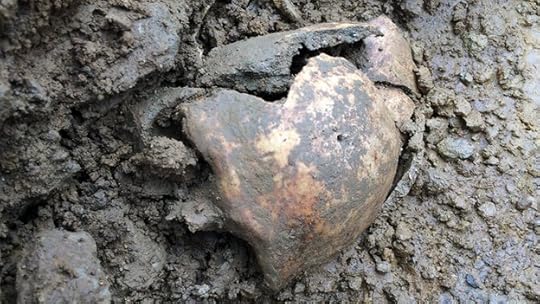 A skull was found near the Roman tombstone which is believed to belong to the 27-year-old woman About 300 to 400 Roman tombstones have been discovered in the UK, with the tombstone being the tenth found in Cirencester.
A skull was found near the Roman tombstone which is believed to belong to the 27-year-old woman About 300 to 400 Roman tombstones have been discovered in the UK, with the tombstone being the tenth found in Cirencester.
The stone, which is made of Cotswold limestone, was partially cleaned up on-site by the team, but will be taken away for further inspection.
Mr Holbrook said it was "amazing" the tombstone had survived.
"When they built the garage in the 1960s they scraped across the top of the stone to put a beam in.
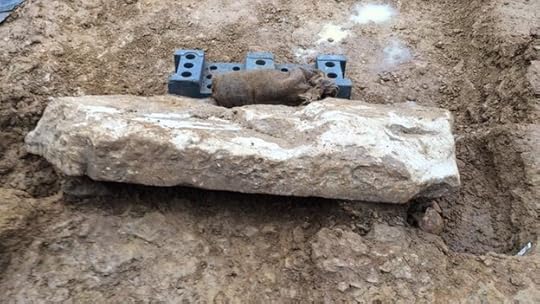 The tombstone was discovered during a dig at a Roman cemetery in Cirencester
The tombstone was discovered during a dig at a Roman cemetery in Cirencester 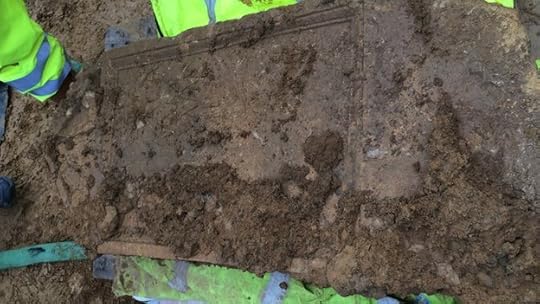 The tombstone was lifted up by archaeologists revealing details of the Roman who was buried there "If they'd gone a couple of inches lower they'd have smashed it to smithereens."
The tombstone was lifted up by archaeologists revealing details of the Roman who was buried there "If they'd gone a couple of inches lower they'd have smashed it to smithereens."
Roman tombstones were often taken away and smashed up to be re-used in buildings in Cirencester in the Medieval period.
"This stone might have fallen over quite quickly, and was covered over, and that's why it escaped the stone robbers," Mr Holbrook said.
A total of 55 Roman graves have been found during the dig at St James Place.
A further 70 graves were discovered on the same site of the former Bridges Garage on Tetbury Road and a bronze cockerel figurine was found in 2011.
Cirencester, or Corinium as it was known, was the largest town in Roman Britain after London.
 Archaeologists say the quality of the sculpture is very good A "unique" Roman headstone is the first of its kind unearthed in the UK, experts believe.The tombstone was found near skeletal remains thought to belong to the person named on its inscription, making the discovery unique.
Archaeologists say the quality of the sculpture is very good A "unique" Roman headstone is the first of its kind unearthed in the UK, experts believe.The tombstone was found near skeletal remains thought to belong to the person named on its inscription, making the discovery unique.Archaeologists behind the dig in Cirencester, Gloucestershire, said they believed it marked the grave of a 27-year-old woman called Bodica.
The bodies of three children were also found in the "family burial plot".
Neil Holbrook, of Cotswold Archaeology, translated the Roman inscription on the tombstone, which reads: "To the spirit of the departed Bodica [or Bodicaca], wife, lived for 27 years."
Mr Holbrook said: "The unique aspect is that you can put a name to the person who lies beneath the tombstone."
A rare Roman tombstone marking the grave of a 27-year-old woman has been unearthed in Cirencester"What's weird is that the inscription only fills half of the panel, so there's a space left below it.
"You can see horizontal marking-out lines, so I guess what they were going to do was come back later when her husband died and add his name to the inscription," Mr Holbrook added.
He added that the skeletal remains, including the skull, were being excavated from beneath the headstone.
'Decorative swirls' Mr Holbrook has suggested the name Bodica was of Celtic origin.
Watch the moment archaeologists lifted a Roman tombstone in Cirencester"Perhaps Bodica is a local Gloucestershire girl who's married an incoming Roman or Gaul from France and has adopted this very Roman way of death," he said.
He said making the "good quality" headstone must have cost "quite a lot of money" at the time.
The headstone's detailed carved pediment - or triangular top section - was particularly interesting, he said.
"Looking at the pediment, those little 'teeth' which we could see from the back are decorative swirls.
"It looks like a draping of a cloth or sheet, so in many ways the decoration is really fine."
 A skull was found near the Roman tombstone which is believed to belong to the 27-year-old woman About 300 to 400 Roman tombstones have been discovered in the UK, with the tombstone being the tenth found in Cirencester.
A skull was found near the Roman tombstone which is believed to belong to the 27-year-old woman About 300 to 400 Roman tombstones have been discovered in the UK, with the tombstone being the tenth found in Cirencester.The stone, which is made of Cotswold limestone, was partially cleaned up on-site by the team, but will be taken away for further inspection.
Mr Holbrook said it was "amazing" the tombstone had survived.
"When they built the garage in the 1960s they scraped across the top of the stone to put a beam in.
 The tombstone was discovered during a dig at a Roman cemetery in Cirencester
The tombstone was discovered during a dig at a Roman cemetery in Cirencester  The tombstone was lifted up by archaeologists revealing details of the Roman who was buried there "If they'd gone a couple of inches lower they'd have smashed it to smithereens."
The tombstone was lifted up by archaeologists revealing details of the Roman who was buried there "If they'd gone a couple of inches lower they'd have smashed it to smithereens."Roman tombstones were often taken away and smashed up to be re-used in buildings in Cirencester in the Medieval period.
"This stone might have fallen over quite quickly, and was covered over, and that's why it escaped the stone robbers," Mr Holbrook said.
A total of 55 Roman graves have been found during the dig at St James Place.
A further 70 graves were discovered on the same site of the former Bridges Garage on Tetbury Road and a bronze cockerel figurine was found in 2011.
Cirencester, or Corinium as it was known, was the largest town in Roman Britain after London.
Published on February 26, 2015 14:32
British Library to display King John's teeth and thumb bone in Magna Carta celebrations
The Guardian
Exhibition commemorating the 800-year anniversary of the sealing of Magna Carta will feature royal relics
 Two molars and a thumb bone belonging to King John, the medieval monarch, who granted the charter of Magna Carta. Photograph: Claire Kendall/British Library/PA
Two molars and a thumb bone belonging to King John, the medieval monarch, who granted the charter of Magna Carta. Photograph: Claire Kendall/British Library/PA
King John is coming to the British Library for the exhibition celebrating the most famous event of his reign, the sealing of Magna Carta at Runnymede 800 years ago.
The king will be represented by two extraordinary loans; two teeth are coming from Worcester city museum, where they have only occasionally been on display, and a thumb bone which was also taken as a souvenir from his tomb but returned to Worcester cathedral 160 years later. The cathedral is also lending its original copy of John’s will.
They will be on display in the British Library’s Magna Carta: Law, Liberty, Legacy opening on March 13, the largest exhibition mounted on the charter that inspired centuries of declarations of human rights.
The teeth and bone were taken when John’s splendid tomb at Worcester cathedral was opened in 1797 – supposedly to verify it held the king, but part of a late 18th century antiquarian craze for opening royal tombs. The tomb stayed open for almost two days and the cathedral was heaving with sightseers until the authorities were forced to close it to keep order.
John had a particular affection for Worcester: two of his favourite hunting grounds were nearby, and he visited the shrine of the Anglo-Saxon Saint Wulfstan at the cathedral several times. When the king died in October 1216 at Newark castle, probably of dysentery rather than the poison or “surfeit of peaches” of contemporary sources, he requested to be buried there near the saint.
His splendid tomb was opened at least twice, in the 16th century and in 1797 when only rotting scraps remained of the fabulous embroidered robe of crimson damask recorded 200 years earlier. Various fragments of fabric and bits of bone were taken as souvenirs, including the teeth and the thumb.
A local surgeon, Mr Sandford, was present when the tomb was opened and recorded what hapened. The body was found lying in the same position as the effigy, but the bones had been disturbed, with the jaw lying by the elbow.
All but four of the teeth, and most of both hands, had vanished, presumably to earlier souvenir hunters. A note preserved with the teeth says: “These are two teeth taken from the head of King John by William Wood, a stationer’s apprentice, in 1797.”
The skull was wrapped in a monk’s cowl rather than the crown shown on the effigy, and a sword in a leather scabbard lay by the side of the remains. The bones were measured, and John’s height in life estimated at 5 foot six inches. The textiles were interpreted as parts of socks, some shoe leather, as well as the shreds of the damask shroud – scraps of surviving embroidery, including a lion’s head, showed it had once been a truly regal garment.
The will is the earliest surviving English royal example. It was dictated just before John’s death, and is thought to indicate how weakened he was because, instead of spelling out exactly how his possessions should be distributed, he left the decisions to his group of close advisers.
Worcester cathedral is also mounting an exhibition and events programme about Magna Carta.
Exhibition commemorating the 800-year anniversary of the sealing of Magna Carta will feature royal relics
 Two molars and a thumb bone belonging to King John, the medieval monarch, who granted the charter of Magna Carta. Photograph: Claire Kendall/British Library/PA
Two molars and a thumb bone belonging to King John, the medieval monarch, who granted the charter of Magna Carta. Photograph: Claire Kendall/British Library/PA King John is coming to the British Library for the exhibition celebrating the most famous event of his reign, the sealing of Magna Carta at Runnymede 800 years ago.
The king will be represented by two extraordinary loans; two teeth are coming from Worcester city museum, where they have only occasionally been on display, and a thumb bone which was also taken as a souvenir from his tomb but returned to Worcester cathedral 160 years later. The cathedral is also lending its original copy of John’s will.
They will be on display in the British Library’s Magna Carta: Law, Liberty, Legacy opening on March 13, the largest exhibition mounted on the charter that inspired centuries of declarations of human rights.
The teeth and bone were taken when John’s splendid tomb at Worcester cathedral was opened in 1797 – supposedly to verify it held the king, but part of a late 18th century antiquarian craze for opening royal tombs. The tomb stayed open for almost two days and the cathedral was heaving with sightseers until the authorities were forced to close it to keep order.
John had a particular affection for Worcester: two of his favourite hunting grounds were nearby, and he visited the shrine of the Anglo-Saxon Saint Wulfstan at the cathedral several times. When the king died in October 1216 at Newark castle, probably of dysentery rather than the poison or “surfeit of peaches” of contemporary sources, he requested to be buried there near the saint.
His splendid tomb was opened at least twice, in the 16th century and in 1797 when only rotting scraps remained of the fabulous embroidered robe of crimson damask recorded 200 years earlier. Various fragments of fabric and bits of bone were taken as souvenirs, including the teeth and the thumb.
A local surgeon, Mr Sandford, was present when the tomb was opened and recorded what hapened. The body was found lying in the same position as the effigy, but the bones had been disturbed, with the jaw lying by the elbow.
All but four of the teeth, and most of both hands, had vanished, presumably to earlier souvenir hunters. A note preserved with the teeth says: “These are two teeth taken from the head of King John by William Wood, a stationer’s apprentice, in 1797.”
The skull was wrapped in a monk’s cowl rather than the crown shown on the effigy, and a sword in a leather scabbard lay by the side of the remains. The bones were measured, and John’s height in life estimated at 5 foot six inches. The textiles were interpreted as parts of socks, some shoe leather, as well as the shreds of the damask shroud – scraps of surviving embroidery, including a lion’s head, showed it had once been a truly regal garment.
The will is the earliest surviving English royal example. It was dictated just before John’s death, and is thought to indicate how weakened he was because, instead of spelling out exactly how his possessions should be distributed, he left the decisions to his group of close advisers.
Worcester cathedral is also mounting an exhibition and events programme about Magna Carta.
Published on February 26, 2015 06:56
Pharaoh Brutally Killed in Battle, Analysis Shows
by Rossella Lorenzi Discovery News
 Pharaoh Senebkay, one of the earliest kings of a forgotten Abydos Dynasty, was brutally killed in battle more than 3,600 years ago, says a study that has reconstructed, blow by blow, the king’s last moments.
Pharaoh Senebkay, one of the earliest kings of a forgotten Abydos Dynasty, was brutally killed in battle more than 3,600 years ago, says a study that has reconstructed, blow by blow, the king’s last moments.
The research identified 18 wounds on the pharaoh’s bones. It also established that Senebkay is the earliest Egyptian pharaoh to have died in battle.
Woseribre Senebkay was unknown to history until last year, when a University of Pennsylvania expedition led by archaeologist Josef Wegner, working with Egypt’s Supreme Council of Antiquities, found his remains in a four-chambered tomb at South Abydos in Sohag province, about 300 miles south of Cairo.
Video: Why Did We Stop Building Pyramids?
Texts in the burial, which dates to about 1650 B.C., during Egypt’s Second Intermediate Period, identified the pharaoh as the “king of Upper and Lower Egypt, Woseribre, the son of Re, Senebkay.”
Although ancient robbers had ripped apart the pharaoh’s mummy, researchers led by Wegner, associate director of Egyptian archaeology at the University of Pennsylvania, were able to recover and reassemble his skeleton.
The team has now completed a full forensic analysis of the remains.
“The work confirms the earlier estimates of the king’s height at 1.72 to 1.82 m (5’9″ to 6 feet), but indicates that he died at an earlier age, 35-40 years, than initially thought,” Wegner said in a statement.
New Pharaoh Found in Egypt: Photos
Most importantly, it emerged that Senebkay suffered a shocking number of wounds before he died in a vicious assault from multiple assailants.
“The king’s skeleton has 18 wounds that penetrated to the bone. The trauma includes major cuts to his feet, ankles, and lower back. Multiple blows to Senebkay’s skull show the distinctive size and curvature of battle axes used during Egypt’s Second Intermediate Period,” Wegner said.
According to the researchers, the angle and direction of Senebkay’s wounds indicate he was in an elevated position — possibly on horseback or on a chariot — when he was attacked and killed.
“His assailants first cut his lower back, ankles and feet to bring him to the ground and then finished him with axe blows to the skull,” Wegner said.
He noted that, although use of horseback riding in warfare was not common until after the Bronze Age, the Egyptians appear to have been mastering the use of horses during the Second Intermediate Period.
“Horseback riding may have played a growing role in military movements during this era even before the full advent of chariot technology in Egypt,” he said.
Pharaonic Rock Carvings Found in Egypt
Indeed, analysis of Senebkay’s pelvis and leg bones indicate he spent much of his life as a horse rider.
Senebkay, whose name means “my spirit is healthy,” appears to belong to a short-lived kingdom, the Abydos Dynasty dating ca. 1650-1600 BC. At that time central authority collapsed, giving rise to several small kingdoms.
The kings of this dynasty were contemporaries of the Hyksos rulers of the Nile Delta and the Theban 16th Dynasty.
According to the researchers, Senebkay was probably killed a considerable distance from his home as the pharaoh’s body was mummified a long time after his death.
“It remains unclear whether he died in battle against the Hyksos kings who then ruled northern Egypt, or possibly enemies in the south,” Wegner said.
Image: Axe wounds to the front and back of the skull. Credit: Josef Wegner.
 Pharaoh Senebkay, one of the earliest kings of a forgotten Abydos Dynasty, was brutally killed in battle more than 3,600 years ago, says a study that has reconstructed, blow by blow, the king’s last moments.
Pharaoh Senebkay, one of the earliest kings of a forgotten Abydos Dynasty, was brutally killed in battle more than 3,600 years ago, says a study that has reconstructed, blow by blow, the king’s last moments.The research identified 18 wounds on the pharaoh’s bones. It also established that Senebkay is the earliest Egyptian pharaoh to have died in battle.
Woseribre Senebkay was unknown to history until last year, when a University of Pennsylvania expedition led by archaeologist Josef Wegner, working with Egypt’s Supreme Council of Antiquities, found his remains in a four-chambered tomb at South Abydos in Sohag province, about 300 miles south of Cairo.
Video: Why Did We Stop Building Pyramids?
Texts in the burial, which dates to about 1650 B.C., during Egypt’s Second Intermediate Period, identified the pharaoh as the “king of Upper and Lower Egypt, Woseribre, the son of Re, Senebkay.”
Although ancient robbers had ripped apart the pharaoh’s mummy, researchers led by Wegner, associate director of Egyptian archaeology at the University of Pennsylvania, were able to recover and reassemble his skeleton.
The team has now completed a full forensic analysis of the remains.
“The work confirms the earlier estimates of the king’s height at 1.72 to 1.82 m (5’9″ to 6 feet), but indicates that he died at an earlier age, 35-40 years, than initially thought,” Wegner said in a statement.
New Pharaoh Found in Egypt: Photos
Most importantly, it emerged that Senebkay suffered a shocking number of wounds before he died in a vicious assault from multiple assailants.
“The king’s skeleton has 18 wounds that penetrated to the bone. The trauma includes major cuts to his feet, ankles, and lower back. Multiple blows to Senebkay’s skull show the distinctive size and curvature of battle axes used during Egypt’s Second Intermediate Period,” Wegner said.
According to the researchers, the angle and direction of Senebkay’s wounds indicate he was in an elevated position — possibly on horseback or on a chariot — when he was attacked and killed.
“His assailants first cut his lower back, ankles and feet to bring him to the ground and then finished him with axe blows to the skull,” Wegner said.
He noted that, although use of horseback riding in warfare was not common until after the Bronze Age, the Egyptians appear to have been mastering the use of horses during the Second Intermediate Period.
“Horseback riding may have played a growing role in military movements during this era even before the full advent of chariot technology in Egypt,” he said.
Pharaonic Rock Carvings Found in Egypt
Indeed, analysis of Senebkay’s pelvis and leg bones indicate he spent much of his life as a horse rider.
Senebkay, whose name means “my spirit is healthy,” appears to belong to a short-lived kingdom, the Abydos Dynasty dating ca. 1650-1600 BC. At that time central authority collapsed, giving rise to several small kingdoms.
The kings of this dynasty were contemporaries of the Hyksos rulers of the Nile Delta and the Theban 16th Dynasty.
According to the researchers, Senebkay was probably killed a considerable distance from his home as the pharaoh’s body was mummified a long time after his death.
“It remains unclear whether he died in battle against the Hyksos kings who then ruled northern Egypt, or possibly enemies in the south,” Wegner said.
Image: Axe wounds to the front and back of the skull. Credit: Josef Wegner.
Published on February 26, 2015 06:47
History Trivia - Spanish Inquisition delivers an injunction to Galileo
February 26
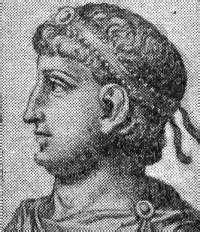
364 Valentinian I, founder of the Valentinian Dynasty and considered to be the last great Western Emperor, was proclaimed Roman Emperor.
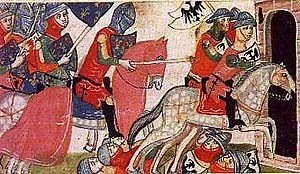
1266 Battle of Benevento was fought between Charles of Anjou and Manfred of Sicily. Charles' victory resulted in the collapse of Hohenstaufen rule in Italy.
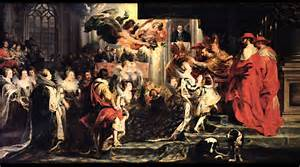
1616 Spanish Inquisition delivered an injunction to Galileo.

364 Valentinian I, founder of the Valentinian Dynasty and considered to be the last great Western Emperor, was proclaimed Roman Emperor.

1266 Battle of Benevento was fought between Charles of Anjou and Manfred of Sicily. Charles' victory resulted in the collapse of Hohenstaufen rule in Italy.

1616 Spanish Inquisition delivered an injunction to Galileo.
Published on February 26, 2015 02:00
February 25, 2015
Henry VIII's evidence to support break with Rome turns up in Cornish Library
The Guardian
 The book is a summary of the theories of the medieval philosopher and theologian William of Ockham. Photograph: Steven Haywood Book of legal and philosophical advice on king’s efforts to have his marriage to Catherine of Aragon annulled helped change the course of English history A book which helped changed the course of English history, part of the evidence Henry VIII and his lawyers gathered in the 1530s to help win an annulment from Catherine of Aragon and ultimately to break with Rome, has turned up on the shelves of the magnificent library at Lanhydrock, a National Trust mansion in Cornwall.
The book is a summary of the theories of the medieval philosopher and theologian William of Ockham. Photograph: Steven Haywood Book of legal and philosophical advice on king’s efforts to have his marriage to Catherine of Aragon annulled helped change the course of English history A book which helped changed the course of English history, part of the evidence Henry VIII and his lawyers gathered in the 1530s to help win an annulment from Catherine of Aragon and ultimately to break with Rome, has turned up on the shelves of the magnificent library at Lanhydrock, a National Trust mansion in Cornwall.
The book, a summary of the theories of the medieval philosopher and theologian William of Ockham, has been newly identified by a US scholar and expert on the history of Henry’s library. The book was damaged but escaped destruction in a disastrous fire at the house in 1881, and crucially the fly-leaf survived. It still carries the number 282, written in black ink in the top right-hand corner, which Prof James Carley identified as corresponding with an inventory taken in 1542 of the most important of Henry’s books, five years before the king’s death.
Paul Holden, the house and collections manager at Lanhydrock, said: “It was an amazing moment. The old long gallery here is about the length of a football pitch, and the professor lapped it about six times when we found the book.”
There is nothing of Henry’s handwriting in the book, but Carley is certain it was consulted during the years when the king was desperately seeking a way, with the aid of Thomas Cromwell, of getting rid of his first wife Catherine, and marrying and conceiving a male heir with Anne Boleyn – the drama chronicled in Hilary Mantel’s Wolf Hall.
Henry’s agents were gathering evidence that could support the move, which may be how the collection of the views of the 14th century priest and philosopher, published in 1495, came to the royal library. Ockham wrote in Latin of the limits of the power of the pope, and the independence of the authority of monarchs. Several pages in the book have key passages marked by secretaries for Henry’s attention, including one crucial section with a heading which translates as: “When it is permitted to withdraw from obedience to the pope”.
In 1532 Henry would begin exactly that process of withdrawal from Rome. In 1533, despite its refusal to annul his first marriage, he married the almost certainly pregnant Anne Boleyn. Pope Clement VII declared that Catherine was still the rightful queen of England, and Henry responded with the Act of Supremacy, establishing himself as the head of the Church of England. The breach with Rome was complete.
Carley described the discovery as thrilling.
“The book is important not only for its provenance but for the notes entered in it by Henry VIII’s advisers and no doubt intended for him to see. They draw attention to precisely the sort of issues that were so relevant to the king’s policies in the years leading up to the break with Rome.”
In the 17th century, when many books were disposed of from the royal collection, it was acquired by a Cornish scholar and chaplain, the wonderfully named Hannibal Gamon, who left his signature on the title page. He in turn left the best of his books to his friend and patron John Robartes, first Earl of Radnor, at Lanhydrock. The book has sat on the shelves, rarely opened and its importance unrecognised, shelves ever since.
The library collection at Lanhydrock is famous, the finest among the National Trust’s properties, and far older than the present imposing granite house, which is almost entirely a Victorian replacement for the Jacobean building gutted by fire, when almost all the books were saved. Although the leather covers are original, the book’s spine was replaced after the fire which helped further disguise it.
Early this year Carley was among many scholars who come to use the collection, and Holden asked him to look at two volumes with the arms of Henry and Catherine of Aragon. Carley concluded they showed royal loyalty but not royal origins, but suggested it might be worth checking the collection for books from Henry’s library.
The two men started taking down every book marked in the Lanhydrock catalogue as older than 1542, and checking them against a copy of Henry’s inventory, and within an hour, when they reached Section C of the shelves, opened the book and saw the neat small number 282.
The book will now be displayed for the first time as a star object, rather than one more brown leather book among thousands, in an exhibition, Monarchy and the Book, when the house reopens to the public on 1 March.
 The book is a summary of the theories of the medieval philosopher and theologian William of Ockham. Photograph: Steven Haywood Book of legal and philosophical advice on king’s efforts to have his marriage to Catherine of Aragon annulled helped change the course of English history A book which helped changed the course of English history, part of the evidence Henry VIII and his lawyers gathered in the 1530s to help win an annulment from Catherine of Aragon and ultimately to break with Rome, has turned up on the shelves of the magnificent library at Lanhydrock, a National Trust mansion in Cornwall.
The book is a summary of the theories of the medieval philosopher and theologian William of Ockham. Photograph: Steven Haywood Book of legal and philosophical advice on king’s efforts to have his marriage to Catherine of Aragon annulled helped change the course of English history A book which helped changed the course of English history, part of the evidence Henry VIII and his lawyers gathered in the 1530s to help win an annulment from Catherine of Aragon and ultimately to break with Rome, has turned up on the shelves of the magnificent library at Lanhydrock, a National Trust mansion in Cornwall.The book, a summary of the theories of the medieval philosopher and theologian William of Ockham, has been newly identified by a US scholar and expert on the history of Henry’s library. The book was damaged but escaped destruction in a disastrous fire at the house in 1881, and crucially the fly-leaf survived. It still carries the number 282, written in black ink in the top right-hand corner, which Prof James Carley identified as corresponding with an inventory taken in 1542 of the most important of Henry’s books, five years before the king’s death.
Paul Holden, the house and collections manager at Lanhydrock, said: “It was an amazing moment. The old long gallery here is about the length of a football pitch, and the professor lapped it about six times when we found the book.”
There is nothing of Henry’s handwriting in the book, but Carley is certain it was consulted during the years when the king was desperately seeking a way, with the aid of Thomas Cromwell, of getting rid of his first wife Catherine, and marrying and conceiving a male heir with Anne Boleyn – the drama chronicled in Hilary Mantel’s Wolf Hall.
Henry’s agents were gathering evidence that could support the move, which may be how the collection of the views of the 14th century priest and philosopher, published in 1495, came to the royal library. Ockham wrote in Latin of the limits of the power of the pope, and the independence of the authority of monarchs. Several pages in the book have key passages marked by secretaries for Henry’s attention, including one crucial section with a heading which translates as: “When it is permitted to withdraw from obedience to the pope”.
In 1532 Henry would begin exactly that process of withdrawal from Rome. In 1533, despite its refusal to annul his first marriage, he married the almost certainly pregnant Anne Boleyn. Pope Clement VII declared that Catherine was still the rightful queen of England, and Henry responded with the Act of Supremacy, establishing himself as the head of the Church of England. The breach with Rome was complete.
Carley described the discovery as thrilling.
“The book is important not only for its provenance but for the notes entered in it by Henry VIII’s advisers and no doubt intended for him to see. They draw attention to precisely the sort of issues that were so relevant to the king’s policies in the years leading up to the break with Rome.”
In the 17th century, when many books were disposed of from the royal collection, it was acquired by a Cornish scholar and chaplain, the wonderfully named Hannibal Gamon, who left his signature on the title page. He in turn left the best of his books to his friend and patron John Robartes, first Earl of Radnor, at Lanhydrock. The book has sat on the shelves, rarely opened and its importance unrecognised, shelves ever since.
The library collection at Lanhydrock is famous, the finest among the National Trust’s properties, and far older than the present imposing granite house, which is almost entirely a Victorian replacement for the Jacobean building gutted by fire, when almost all the books were saved. Although the leather covers are original, the book’s spine was replaced after the fire which helped further disguise it.
Early this year Carley was among many scholars who come to use the collection, and Holden asked him to look at two volumes with the arms of Henry and Catherine of Aragon. Carley concluded they showed royal loyalty but not royal origins, but suggested it might be worth checking the collection for books from Henry’s library.
The two men started taking down every book marked in the Lanhydrock catalogue as older than 1542, and checking them against a copy of Henry’s inventory, and within an hour, when they reached Section C of the shelves, opened the book and saw the neat small number 282.
The book will now be displayed for the first time as a star object, rather than one more brown leather book among thousands, in an exhibition, Monarchy and the Book, when the house reopens to the public on 1 March.
Published on February 25, 2015 07:03




